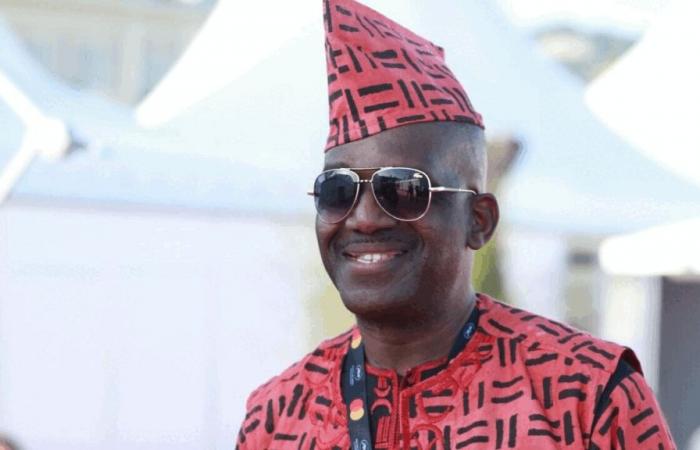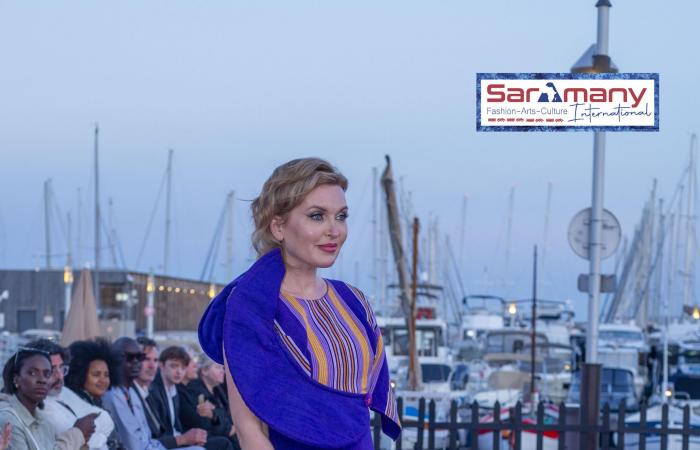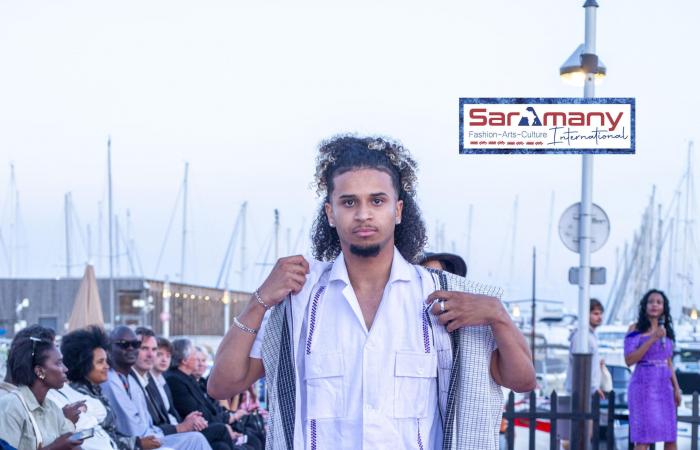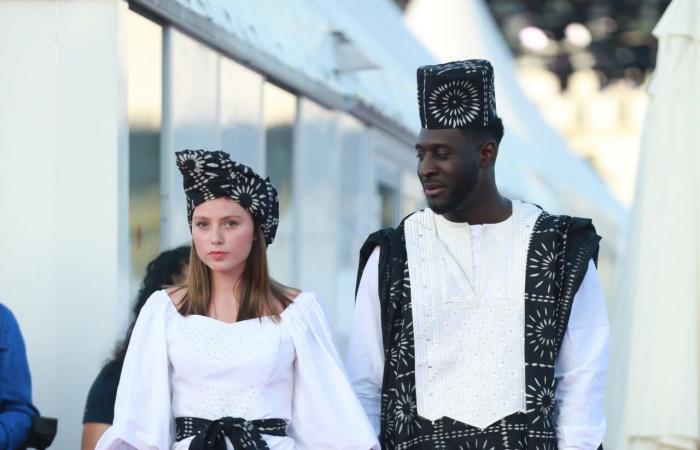Meeting with a stylist whose career combines tradition and modernity: Issa Sorogo, alias Sorobis. An iconic fashion designer, he is dedicated to promoting African textiles by highlighting local artisans and its cultural heritage. Its collections are both elegant and witnesses of history.
With a strong presence in New York, Sorobis strives to bring African authenticity to the highest level on the international stage, while supporting social and economic projects in West Africa. Sorobis sees himself as an ambassador of African know-how, capable of transforming a simple piece of fabric into a work of art.
Creation is my source of life. Starting from nothing and transforming that nothing into something that pleases, I wouldn’t say to everyone, but to a lot of people, is great. It is a gift that God does not give to everyone, it is not palpable. It’s an abstract happiness, certainly, but it fulfills me.
Issa Sorogo aka Sorobis, designer stylist of the Sorobis brand.
« When I launched the name, straight away, I wanted to say Sorogo Bis. I wanted to use a different word than Junior. There was Sorogo and Bis. But as soon as I arrived in the United States, Americans started saying : “It’s too long, you need to shorten it.” Sorogo represents my name, and “bis” means junior, because I’m taking over from the father, and they said no, Sorobis ! »
Born in Ivory Coast to an Ivorian and Burkinabè father and a Nigerian mother, Issa Sorogo alias Sorobis grew up in an environment where sewing was more than a profession, it was an art of living. His father, a tailor, already dressed famous people. With this rich heritage, he naturally moved towards the world of fashion, but with his own approach. Rather than confining himself to cutting and sewing, Sorobis prefers the creation and promotion of fabric and patterns that tell a story, like his favorite fabric, Faso Dan Fani, an emblematic fabric of Burkina Faso.
« It was also through Faso Dan Fani that I started in fashion as a model, when I was taken to Bobo-Dioulasso, when I was in high school, to participate in this textile promotional event Burkinabè. It was Captain Thomas Sankara who organized Faso Dan Fani’s first major fashion show in New York. I think it was 1986 or 1987. When he was giving the awards, he said : “I am counting on you for this inheritance. Spread it throughout the world.” Even designers, great designers, here in the West, are using, at the moment, Faso Dan Fani in their creations. It’s wonderful. A bit like Kente. And this fabric , it works wonders. »
Sorobis’ creations are often linked to his cultural roots. For him, creation is not limited to a design process. It is nourished by meetings, exchanges, and a deep respect for its cultural heritage. Each collection echoes life themes, places from his childhood or the memory of his mother. During a fashion show in Cannes this year, he unveiled a collection inspired by rural life in Burkina Faso.
« The collection that we presented at Cannes this year, I named Saponé. It is a small village not far from Ouagadougou, in Burkina Faso, where the population is 99% rural. And the particularity of this rural population is that they make hats. Hats that are truly representative of Burkina Faso and these hats, I believe, have been deposited at the International Trade Organization. There is a trademark for these hats. As I know that we are quite followed internationally, I try to shed light on everything that is happening in Burkina Faso or Ivory Coast, or even Nigeria. My career began in Bobo-Dioulasso as a model. So at one point there was a collection that I named Diarradougouwhich is one of the most cultural districts of Bobo-Dioulasso. And this collection was in memory of everything that Bobo-Dioulasso brought me. I named a collection Madeleine to pay tribute to my mother who I had just lost. There is always something behind it, Sorobis specifies.

Sorobis believes in the need to protect African textiles against imitations from Asia. Now based in New York, he realizes that his voice resonates even louder on the international scene. « Black Americans love it, and even Caucasian Americans love it. So the impact is stronger. They love it, to the point where, if we, from Africa, don’t put in more work, what is happening with China or India, where African-style copies are reproduced, it will take over. above on African textile. This is why we need people like us on site who see the need and who make this authentic fabric available to these people. There is a difference between the original and the copy, because for those who do not know, then where the colors are there, whether it comes from Asia or India or elsewhere, they say to themselves that there are a bit of African motifs, which is good, but no, it’s not the same thing. And that’s why everything is protected by the International Trade Organization. If we don’t do it, jobs will be lost! Being in a city like New York, which is the crossroads of the world, allows us to have an eye to know what is happening and where to place the emphasis to properly promote this textile and make it available to people who are really interested. This creates a certain limit compared to copies that come from China or India. »
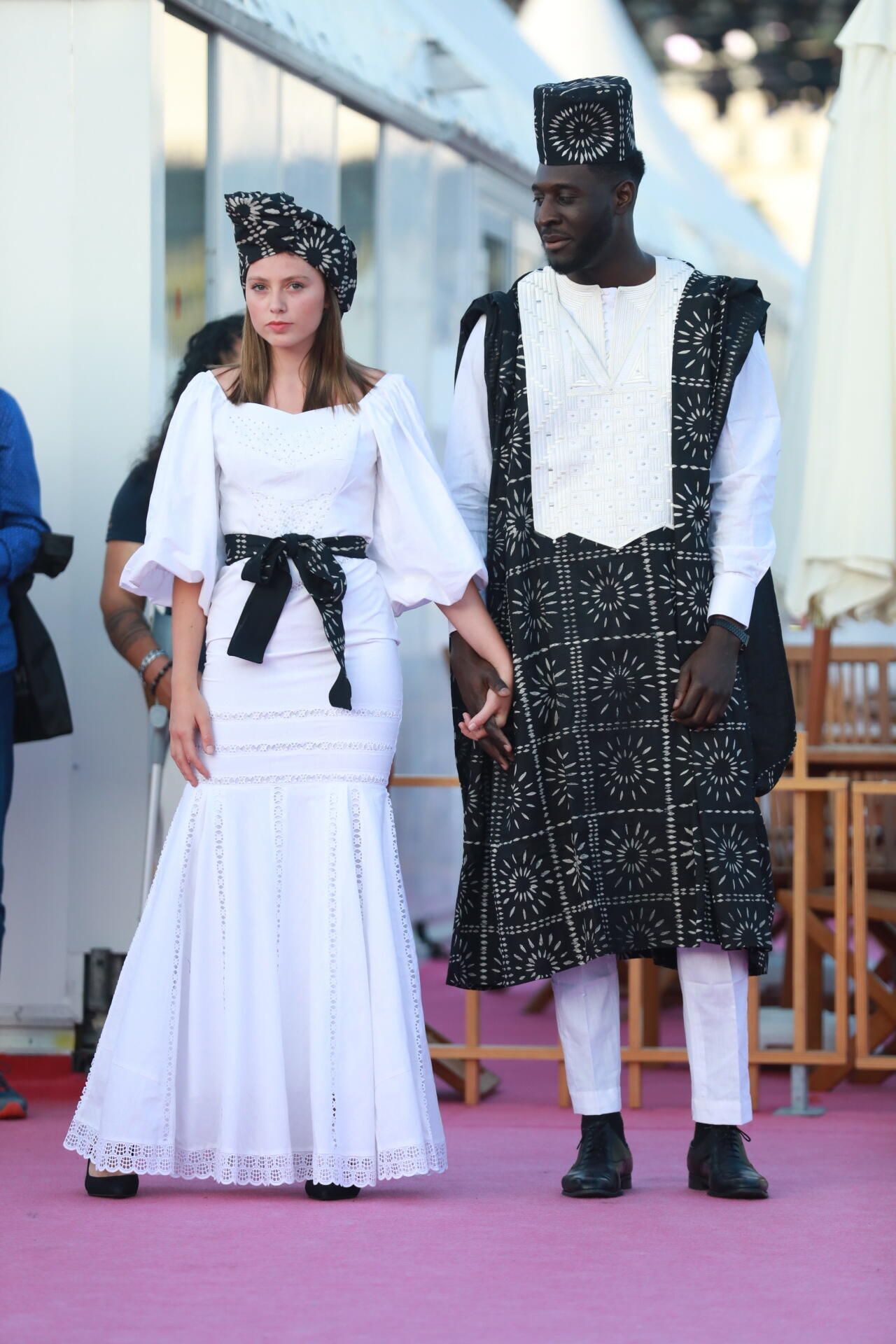
Sorobis is also socially engaged through fashion. He works with local artisans and women’s cooperatives. He wants to appeal to those who, like him, are anchored in this textile tradition. « We are lucky in Africa, there are many artisans. Me, when I arrive especially in Burkina or Ivory Coast, I employ a lot of artisans. They are the ones I want to highlight beyond my work as a creator. And there are so many that you just have to look nearby to find someone who can bring out your ideas and it makes them happy. Very often, these are women who are widows, who do not have a husband and who do not have support in their family, it is all they do to be able to provide for themselves. We are already motivated by this spirit of wanting to help, so we don’t waste time looking. These are people who work with a lot of qualities and we promote this work throughout the world. The primary motivation is that we give them economic strength when we arrive. Most of them are widows and abandoned children. We motivate them by working with them, saying : “Here’s the picture of what you did. The whole world saw it.” That’s how it works. »
Find all the episodes of 100% Création on:
Apple Podcast Castbox Deezer Google Podcast Podcast Addict Spotify or any other platform via RSS feed.

